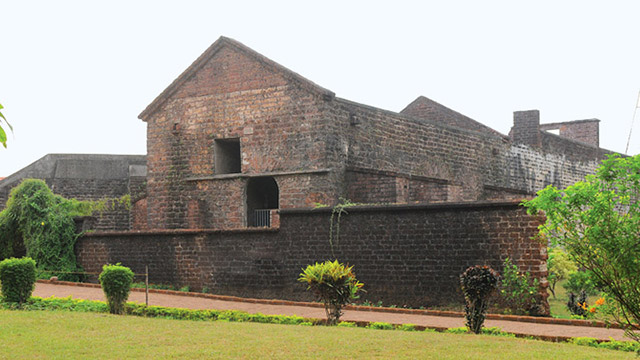St. Angelo Fort, situated in the captivating coastal city of Kannur in Kerala, India, stands as a testament to the region’s rich history, architectural marvels, and strategic significance that have shaped its cultural heritage and maritime prominence over the centuries. Built by the Portuguese in the 16th century, this iconic fort has withstood the test of time, serving as a living monument to the colonial influences, the maritime trade routes, and the vibrant cultural exchanges that define Kerala’s historical legacy. In this article, we will delve into the historical significance, architectural grandeur, and the unique charm of St. Angelo Fort, offering insights into the fort’s cultural heritage and the captivating allure of Kerala’s historic landmark.
Historical Significance and Colonial Heritage
Portuguese Legacy: St. Angelo Fort, originally known as the Fortaleza de São Ângelo, was constructed by the Portuguese in 1505, serving as a strategic defense outpost and a prominent trading hub along the Malabar Coast, showcasing the colonial legacy and the maritime influences that shaped the region’s cultural and historical narratives.
Dutch and British Influences: Over the centuries, the fort underwent various renovations and alterations under the Dutch and British colonial administrations, reflecting the diverse architectural influences and the strategic importance that the fort held in the context of regional trade, maritime defense, and cultural exchanges that defined Kerala’s coastal prominence.
Architectural Marvels and Coastal Charms
Fortress Design and Structural Elegance: St. Angelo Fort’s architectural design and structural elegance highlight the unique blend of European and local influences, featuring sturdy walls, bastions, and a scenic sea-facing promenade that offer visitors a glimpse into the fort’s historical grandeur and the commanding views of the Arabian Sea that add to its scenic allure and the captivating vistas of Kerala’s coastal landscapes.
Cultural Insights and Heritage Conservation: The fort’s surroundings offer visitors cultural insights into Kannur’s vibrant history, bustling marketplaces, and the warm hospitality of the local communities, fostering an authentic cultural experience and a deeper connection with the region’s rich heritage and the enduring spirit of Kerala’s historic landmark.
Local Attractions and Nearby Landmarks
St. Angelo Fort is located in close proximity to various local attractions, including ancient temples, traditional marketplaces, and vibrant cultural hotspots, allowing visitors to embark on historical tours and cultural excursions that showcase the region’s rich heritage and the vibrant spirit of Kannur’s captivating coastal landscapes.
Preservation and Tourist Information
Efforts are made to preserve the historical significance and architectural grandeur of St. Angelo Fort, offering visitors guided tours, historical information, and cultural insights that underscore the fort’s enduring legacy and the need to protect Kerala’s historical landmarks for the benefit of present and future generations.
Conclusion
St. Angelo Fort stands as a living monument to the rich history and the cultural heritage of Kerala’s captivating coastal city of Kannur. It’s a place where the echoes of the past harmonize with the scenic beauty of the Arabian Sea, inviting visitors to embark on a journey of historical exploration, cultural immersion, and architectural appreciation amidst the captivating allure of Kerala’s enduring historic landmark. Whether you’re a history enthusiast, a cultural connoisseur, or someone seeking insights into Kerala’s colonial past, St. Angelo Fort promises an unforgettable and immersive experience that celebrates the timeless charm and the historical marvels of Kannur’s iconic coastal treasure.

